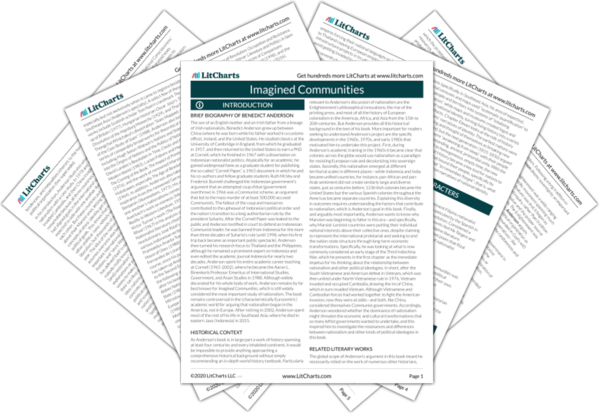Bourgeoisie Quotes in Imagined Communities
An illiterate nobility could still act as a nobility. But the bourgeoisie? Here was a class which, figuratively speaking, came into being as a class only in so many replications. Factory-owner in Lille was connected to factory-owner in Lyon only by reverberation. They had no necessary reason to know of one another’s existence; they did not typically marry each other’s daughters or inherit each other’s property. But they did come to visualize in a general way the existence of thousands and thousands like themselves through print-language. For an illiterate bourgeoisie is scarcely imaginable. Thus in world-historical terms bourgeoisies were the first classes to achieve solidarities on an essentially imagined basis.

Unlock explanations and citation info for this and every other Imagined Communities quote.
Plus so much more...
Get LitCharts A+









